Eleven months ago I posted a “First Look” at my Nighthawk 1911. I had just 750 rounds on the gun at the time. I have since increased the round-count to just a little over 5,250. I have also carried this gun more or less daily for 10 months (so far). This is a follow-up report on the performance of my Nighthawk Custom carry.
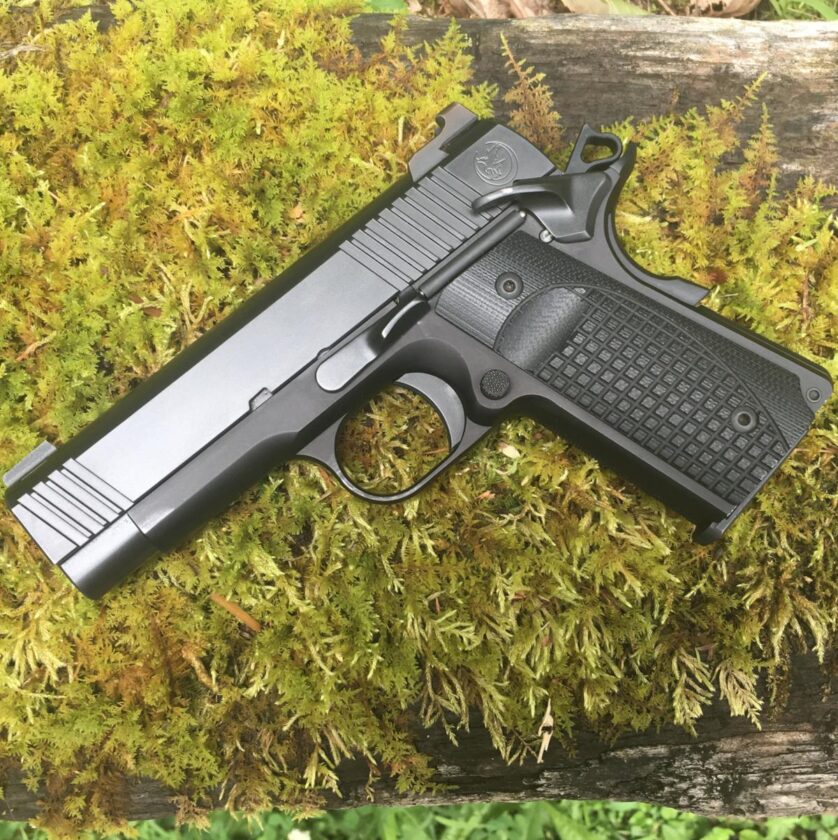
The Nighthawk Custom Carry 1911
My chief reason for writing this is a bit selfish. Before purchasing this gun I could find very few reviews of Nighthawk 1911s that went beyond a few hundred rounds or pushed past “initial impressions” type articles. Since I have both the gun and the platform to do so, I’d like to provide an in-depth look for others who may be considering such a purchase.
The first section below is excerpted from my range log. It is posted here to let you know round counts per session, types of ammunition fired, and frequency of malfunctions experienced. Stupidly, I didn’t track the first 1,000 rounds as studiously, but I did track the round count and malfunctions.
Range Log
Initial Range Sessions (Nov 19 – Dec 21 2018)
1,000 rounds Sellier and Bellot 124-grain FMJ
50 rounds Federal 124-grain +P HST
2 FAILURE TO RETURN TO BATTERY (within first 80 rounds)
2 FAILURE TO RETURN TO BATTERY (between rounds 900 and 950)
03 Jan 2019
100 rounds Sellier and Bellot 124-grain FMJ
Total: 1150, No Malfunctions
04 Jan 2019
100 rounds Sellier and Bellot 124-grain FMJ
Total: 1250, No Malfunctions
06 Jan 2019
100 rounds Sellier and Bellot 124-grain FMJ
Total: 1350, No Malfunctions
24 January 2019
200 rounds Sellier and Bellot 124-grain FMJ
Total: 1,550, 2 FAILURE TO RETURN TO BATTERY
30 January 2019
100 rounds Winchester 124-grain FMJ
Total: 1650, No malfunctions
17 February 2019
150 rounds Sellier and Bellot 124-grain FMJ
Total 1,800, No malfunctions
22 February 2019
150 rounds Sellier and Bellot 124-grain FMJ
Total 1,950, No malfunctions
11 March 2019
50 rounds Sellier and Bellot 124-grain FMJ
50 rounds Federal 124-grain +P HST
Total 2,050, No malfunctions
13 March 2019
50 rounds Sellier and Bellot 124-grain FMJ
100 rounds Fiocchi 124-grain FMJ
Total 2,200, 1 FAILURE TO RETURN TO BATTERY
8 April 2019
100 rounds Fiocchi 124-grain FMJ
Total 2,300, 2 FAILURE TO RETURN TO BATTERY
15 April 2019
100 rounds Fiocchi 124-grain FMJ
Total 2,400, No malfunctions
19 April 2019
100 rounds Winchester White Box 115-grain FMJ
50 rounds Speer GDHP 124-grain +P
Total 2,550, No malfunctions
24 April 2019
50 rounds Fiocchi 124-grain FMJ
Total 2,600 rounds, No malfunctions
26 April 2019
100 rounds Fiocchi 124-grain FMJ
Total 2,700 rounds, 1 FAILURE TO RETURN TO BATTERY
15 May 2019
Detail strip and clean, change recoil spring, switch to Wilson Combat magazines
16 May 2019
50 rounds Sellier and Bellot 115-gr FMJ
Total 2,750, No malfunctions, WC magazines
Rounds Since Last Malfunction: 50
03 June 2019
150 rounds Fiocchi 124-grain FMJ
9 rounds Federal 124-grain +P HST
Total 2,909, No malfunctions, WC magazines
Rounds Since Last Malfunction: 209
04 June 2019
100 rounds Fiocchi 124-grain FMJ
Total 3,009, No malfunctions, WC magazines
Rounds Since Last Malfunction: 309
08 July 2019
150 rounds Fiocchi 124-grain FMJ
18 rounds Federal 124-grain +P HST
Total 3,177, No malfunctions, WC magazines
Rounds Since Last Malfunction: 477
10 July 2019
100 rounds Fiocchi 124-grain FMJ
100 rounds Sellier and Bellot 124-grain FMJ
Total 3,377, No malfunctions, WC magazines
Rounds Since Last Malfunction: 677
18 August 2019
1 round Federal 124-grain +P HST
Total 3,378, No malfunctions, WC magazines
Rounds Since Last Malfunction: 678
21 August 2019
50 rounds Fiocchi 124-grain FMJ
50 rounds Sellier and Bellot 124-grain FMJ
50 rounds Federal 115-grain Hi-Shok JHP
25 rounds Hornady Critical Duty 124-grain +P
20 Winchester Defender 124-grain JHP +P
50 rounds Remington Golden Saber 124-grain JHP +P
50 rounds Winchester Ranger T-series 147-grain JHP
Total 3,673, No malfunctions, WC magazines
Rounds Since Last Malfunction: 973
4 September 2019
236 rounds Sellier and Bellot 124-grain FMJ
Total, 3,909, No malfunctions, WC magazines, *no cleaning
Rounds Since Last Malfunction: 1,209
11 September 2019
200 rounds Sellier and Bellot 124-grain FMJ
Total, 4,109 No malfunctions, WC magazines, *no cleaning
Rounds Since Last Malfunction: 1,409
18 September 2019
100 rounds Fiocchi 124-grain FMJ
18 rounds Federal 124-grain +P HST
20 rounds Cor-Bon 90-grain +P JHP
Total 4,247, No malfunctions, WC magazines
Rounds Since Last Malfunction: 1,547
20 September 2019
200 rounds Sellier and Bellot 124-grain FMJ
Total, 4,447, No malfunctions WC magazines, *no cleaning
Rounds Since Last Malfunction: 1,747
03 October 2019
100 rounds Sellier and Bellot 124-grain FMJ
Total, 4,547, No malfunctions, WC magazines, *no cleaning
Rounds Since Last Malfunction: 1,847
04 October 2019
100 rounds Fiocchi 124-grain FMJ
9 rounds Federal 124-grain +P HST
Total 4,656, No malfunctions, WC magazines
Rounds Since Last Malfunction: 1,956
08 October 2019
50 rounds Fiocchi 124-grain FMJ
50 rounds Sellier and Bellot 124-grain FMJ
Total 4,756, No malfunctions, WC magazines
Rounds Since Last Malfunction: 2,056
11 October 2019
109 rounds Fiocchi 124-grain FMJ
Total 4,865, No malfunctions, WC magazines
Rounds Since Last Malfunction: 2,165
15 October 2019
191 rounds Fiocchi 124-grain FMJ
24 rounds Federal 124-grain +P HST
Total 5,080, No malfunctions, WC magazines
Rounds Since Last Malfunction: 2,380
26 October 2019
78 rounds Fiocchi 124-grain FMJ
Total 5,158, No malfunctions, WC magazines
Rounds Since Last Malfunction: 2,458
31 October 2019
77 rounds Fiocchi 124-grain FMJ
18 roundsFederal 124-grain +P HST
Total 5,253, No malfunctions, WC magazines
Rounds Since Last Malfunction: 2,553
Total 5,253
Ammunition
As you can tell by my range log, the vast majority of ammunition fired was 124-grain. I tend to lean toward the mid-weights in most calibers. Federal’s 124-grain +P HST has proven itself reliable, controllable, and accurate in my gun, so I wanted to match bullet weights for most of my practice ammunition. Both Fiocchi 124-grain FMJ and S&B 124-grain FMJ function well and have similar points of impact, so I stuck with them.

If my math is correct I shot a total of 173 rounds of my carry load (Federal 124-grain +P HST). I also tested the gun with some other bullet styles and weights, mostly just out of curiosity, and sometimes availability. I wanted to see if the gun was reliable with 115- and 147-grain bullets, as well as defensive ammunition styles from other manufacturers.
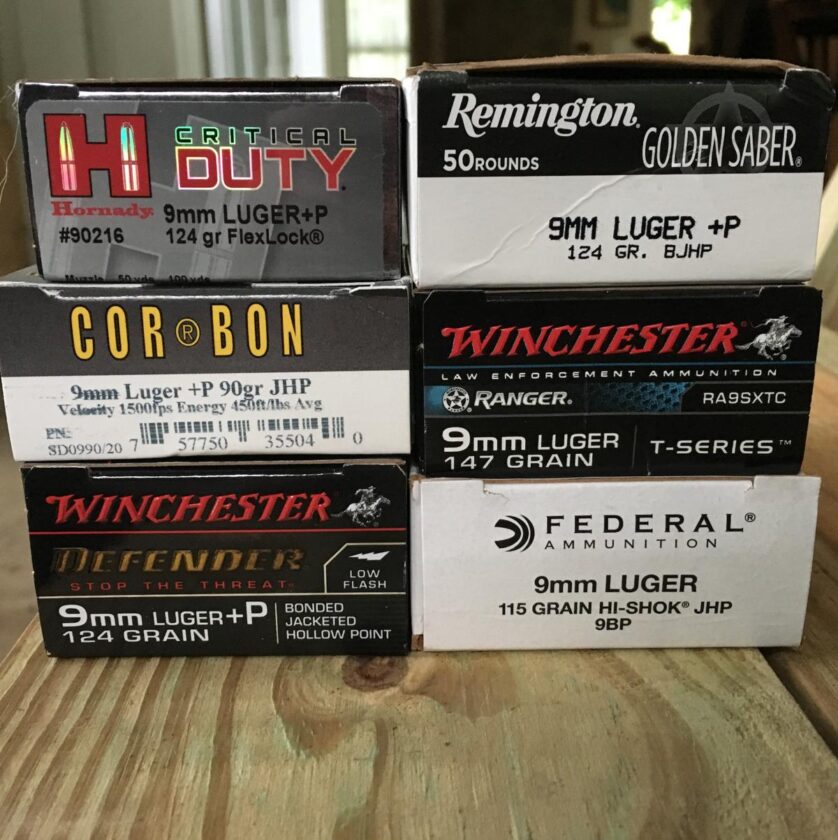
I fired fifty rounds each of Federal Classic 115-grain Hi-Shok 9BP, Remington’s 124-grain +P Golden Saber, Speer’s 124-grain standard pressure Gold Dot, and Winchester 147-grain +P Ranger. I also fired 25 rounds of Hornady 124-grain +P Critical Duty, 20 rounds of Winchester 124-grain +P Defender, and 20 rounds of Cor-Bon’s ultralight 90-grain JHP. Excluding the Cor-Bon 90-grainer, I’d be OK carrying any of these.
Magazines, magazines, magazines
I’m going to get to a discussion of reliability, but with this gun that isn’t possible until we discuss magazines. Most 1911s – and especially 9mm 1911s – are magazine-sensitive and the Nighthawk is no exception. I’m not going to lie; I’m a little salty with Nighthawk Custom when it comes to magazines. I purchased twenty spare magazines with the purchase of my gun. This was a mistake, but one that I made honestly.
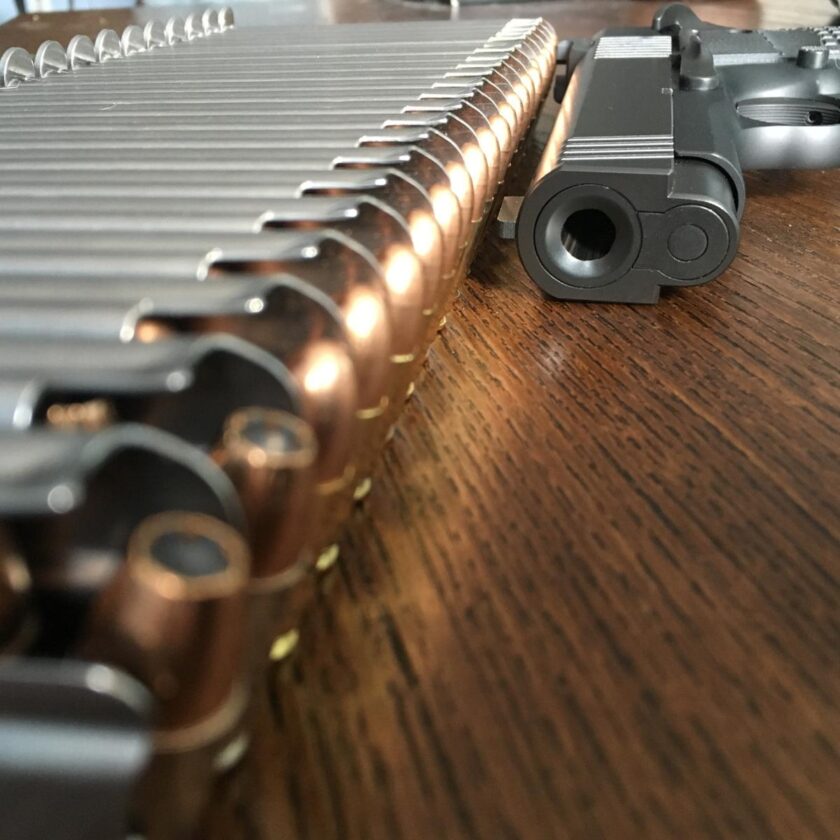
Shortly after putting the initial deposit on the gun, I called my sales rep to inquire about magazines. I have sworn by Wilson Combat mags for years. I was issued .45 ACP Wilson 1911 magazines in the military, and have enjoyed success with them in every 1911 I’ve ever owned. So, I asked my sales rep directly if NHC recommended Wilson’s mags. I was told that Wilson’s 9mm magazines had some unspecified problems and I’d be better served buying sticks from NHC.
When I received my gun I was kind of surprised to see that the magazines were not some high-speed, in-house design. They were the same Metalform magazines that ship with many mass-produced 1911s. In fact, I looked down at a Recoil Magazine and saw the same magazine being shipped with a S&W 1911. Nothing against S&W, but…
In fairness, I may have been told that the magazines were from Metalform. However, having zero experience with Metalform magazines I took Nighthawk Custom’s word when the told me they would work with their gun. “Maybe Nighthawk knows something I don’t,” I thought. And if the mags had worked perfectly, I wouldn’t be complaining right now. But, they didn’t work perfectly.
Magazines & UnReliability
I occasionally experienced failures of the gun to return to battery. These seemed to happen in clusters; the gun would run fine for several hundred rounds, then I’d have a couple malfunctions in a session. A firm tap of the magazine would quickly and easily clear this, indicating the magazine was the issue. Since reviewing my range log I’ll admit that these weren’t as frequent as they seemed, but they were still more frequent than I’d like. With the Metalform magazines I never made it through even 1,000 rounds without a malfunction, and malfunctions actually began to get a little more frequent.
I also experienced the occasional failure of the slide to lock open on an empty magazine. These could have been the result of poor hand placement, but I don’t believe they were as the issue complete dried up after switching magazines. I didn’t record these in my range log, but should have.
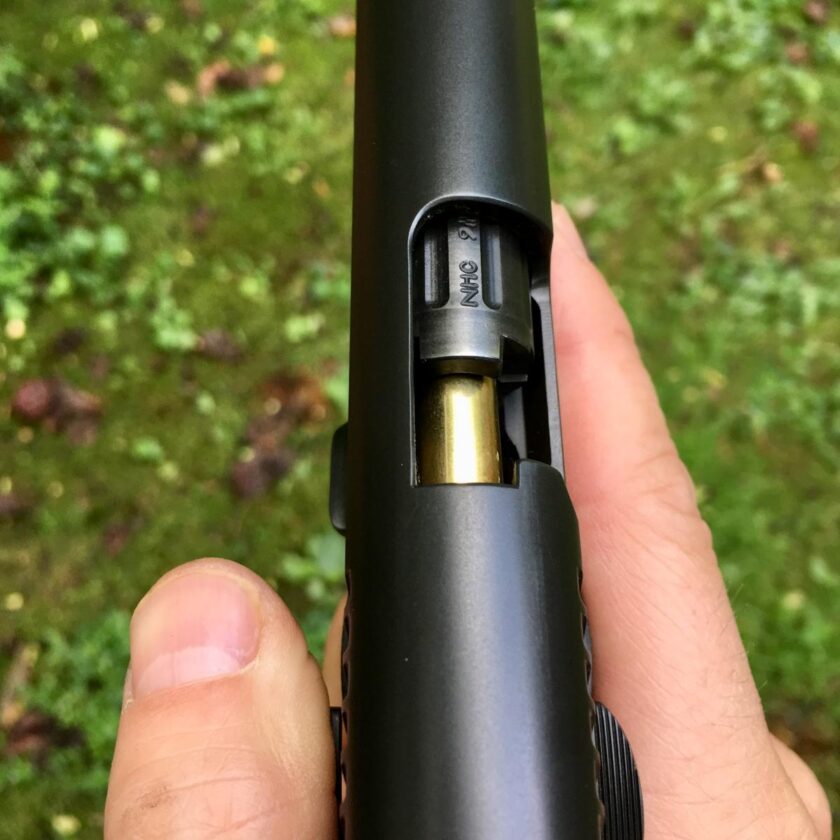
Other than reliability I have a couple other, general complaints about the Metalform magazines. First, they lack of any sort of bumper. They fit flush with the bottom of the frame. For carry that’s OK, since they don’t increase the length of the frame. For reloading or malfunction clearance it’s less than ideal.
The lack of a bumper makes it slightly more difficult to seat the magazine at speed, and increases the likelihood of pinching the crap out of the palm of your hand in the process (it hurts!). If you want a bumper you have to buy one from Nighthawk and install it yourself. So, I threw good money after bad and purchased a few of these at $5/ea., which significantly raises the overall cost of the (already overpriced) magazine. Most of them ended up not getting installed because installation was fairly difficult.
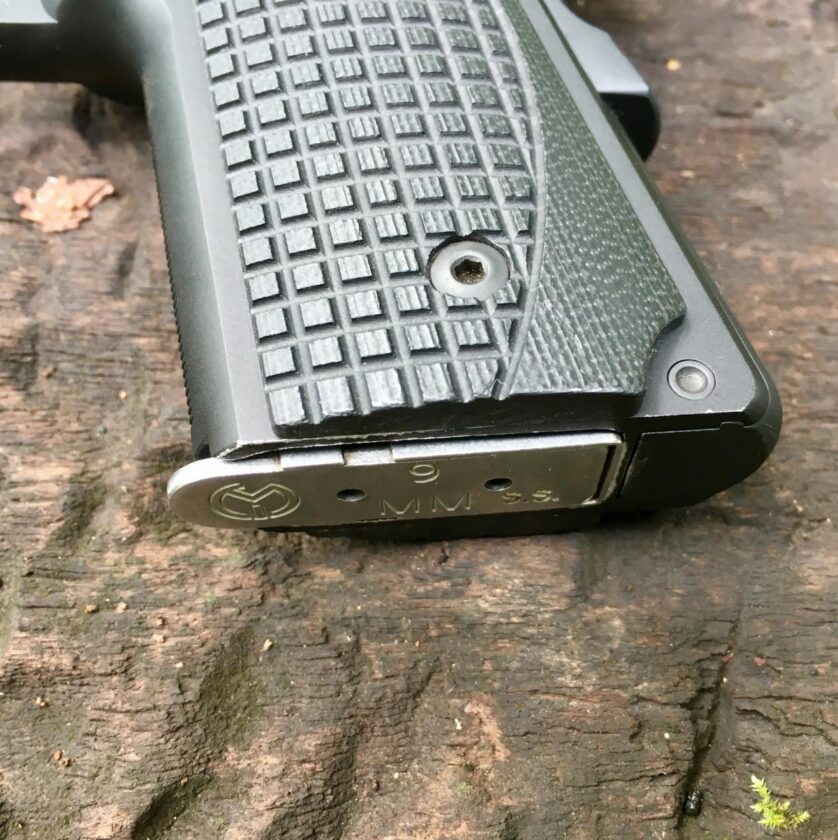
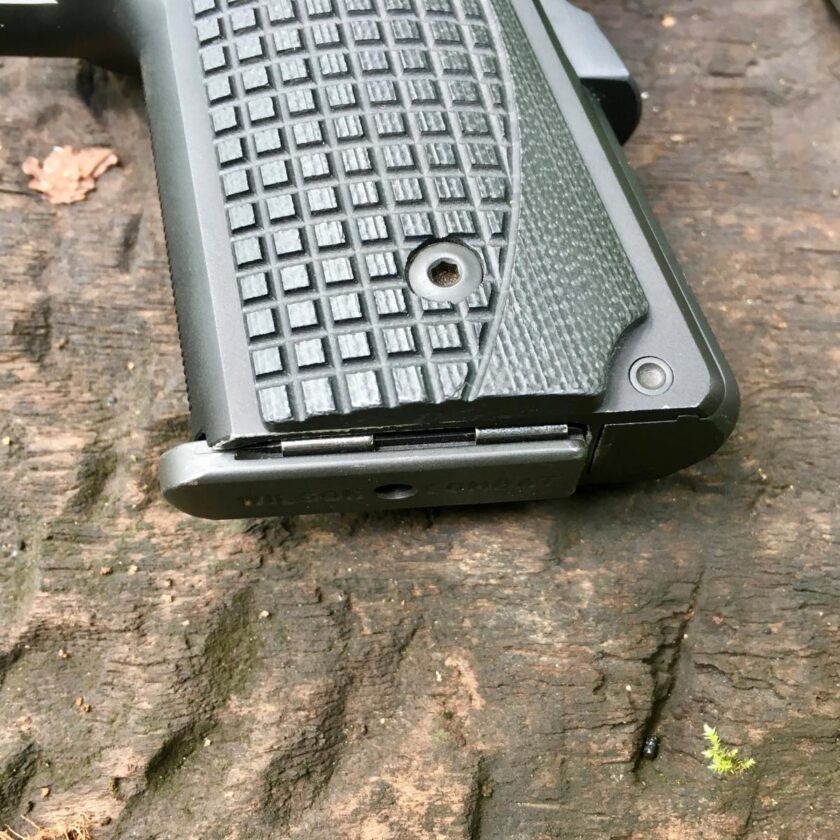
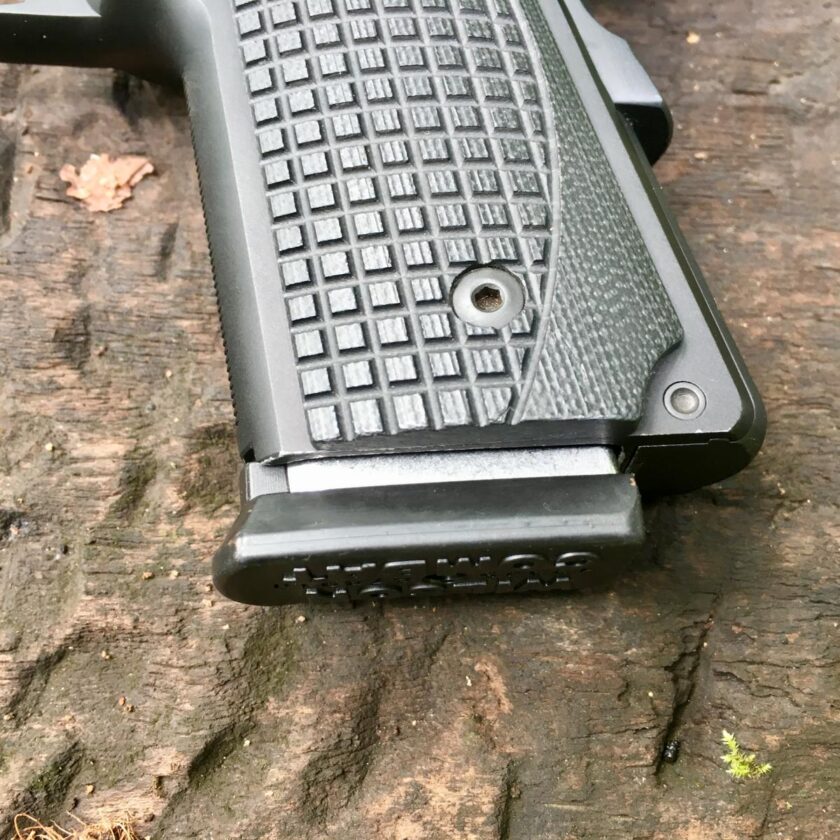
Final complaint: though you can get them apart, the Metalform mags have welded base plates, and aren’t really optimized for disassembly. Five-thousand rounds, divided by my 18 range magazines, divided by eight rounds per mag means that each magazine in my original set would have been loaded, fired, and dropped an average of 34.7 times in live fire, and many times that in dry practice. The ability to disassemble and clean becomes pretty important at that point.
Nighthawk Gun + Wilson Combat Magazines
About the time I reached the 2,700-round mark and was still experiencing malfunctions, I ran across something Greg Ellifritz said and it really stuck with me. One one of his Weekend Knowledge Dumps he commented on a 2000-round range report that, “There were zero gun malfunctions in those 2000 rounds. Is your carry gun that reliable? If not, why are you carrying a gun that jams?” He was right, and I decided it was time to take action.
Not satisfied with recurring malfunctions from a bespoke, fully custom gun, I ordered some Wilson Combat 9mm 8- and 9-round ETM magazines. These magazines have everything going for them that the Metalform magazines lack. First, the general quality between the two is not even comparable. Wilson’s magazines are highly polished and stunningly smooth. I believe this demonstrates an interest in quality and attention to detail. I believe it may also make some practical difference; rounds are able to travel more smoothly within the magazine, and the magazine is able to travel more smoothly within the grip frame.
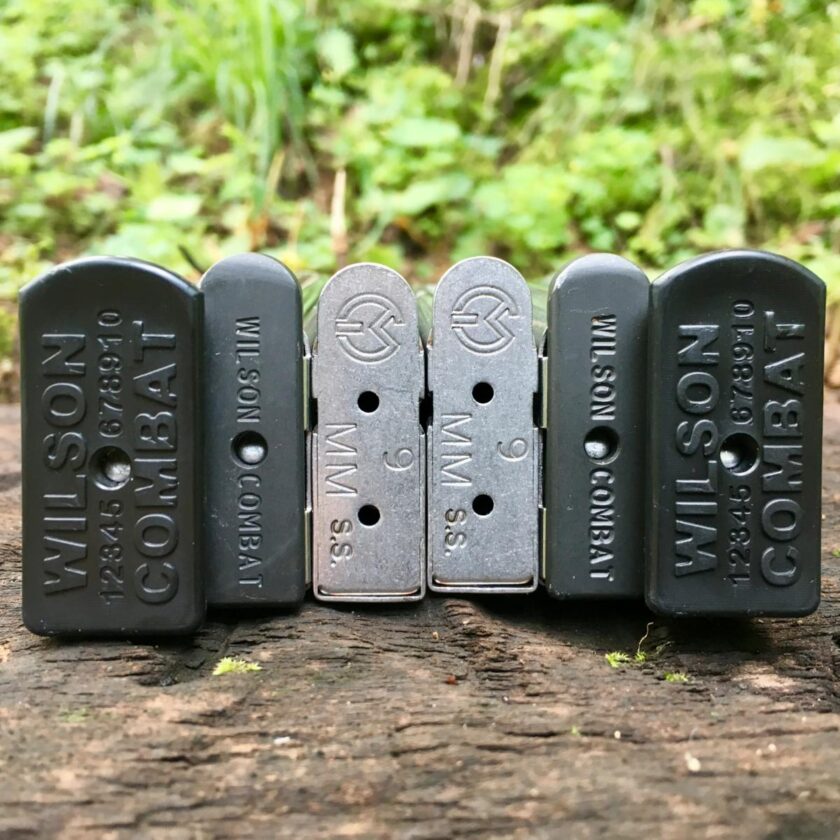
Both Wilson’s 8- and 9-round versions have a bumper. Obviously the 9-rounder’s bumper is longer and provides a bit of additional grip surface if that appeals to you. The 8-rounder’s steel bumper is thin and barely adds to length of the gun, but still provides enough to prevent your palm from getting pinched during reloads. I have taken to carrying the 8-round magazine in the gun and the 9-rounder as my reload. The Wilson ETM magazines are both easily disassembled for inspection and cleaning.
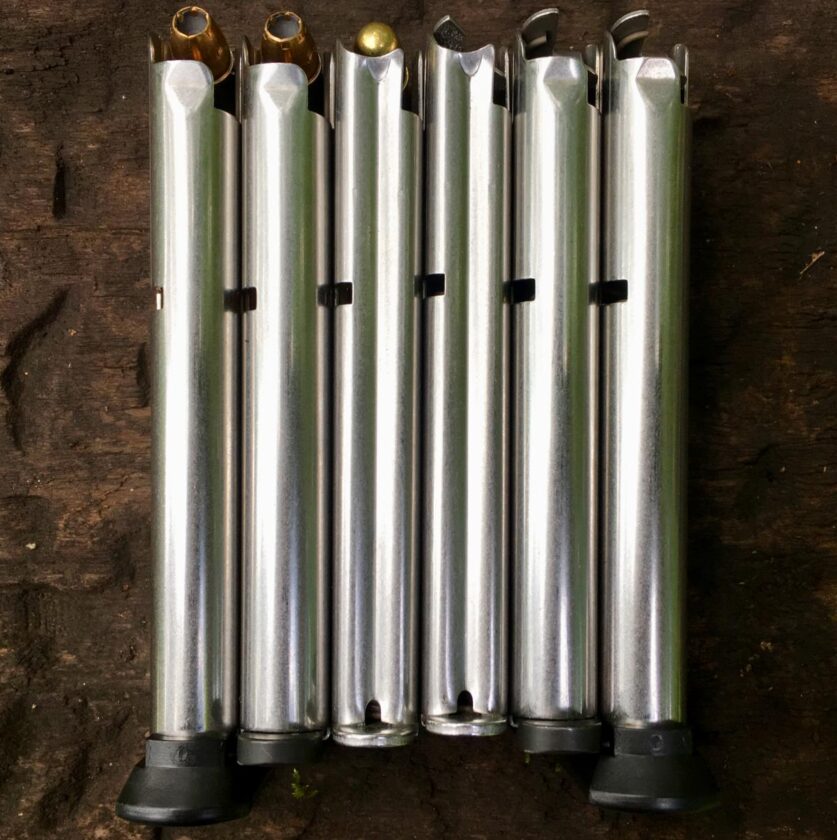
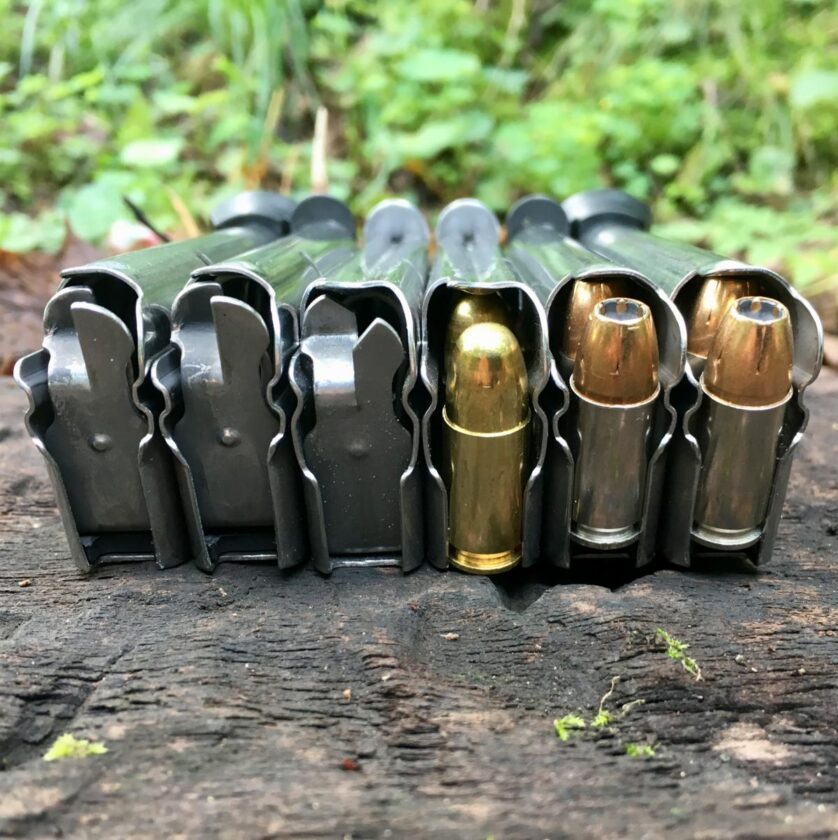
I wish I’d saved the money I spent initially and ordered half as many Wilson Combat mags. I totally understand that Nighthawk doesn’t want to have to send customers down the road to their competition for magazines. I also understand that the Metalform is a cheaper SKU for them. What I don’t understand is why they would hobble this gun with sub-par magazines. You wouldn’t put $40 Geostar tires on a Ferrari; why would you put crappy 1911 mags in a hand-built 1911? Neither the substandard tires or magazines let those tools come anywhere near their full potential.
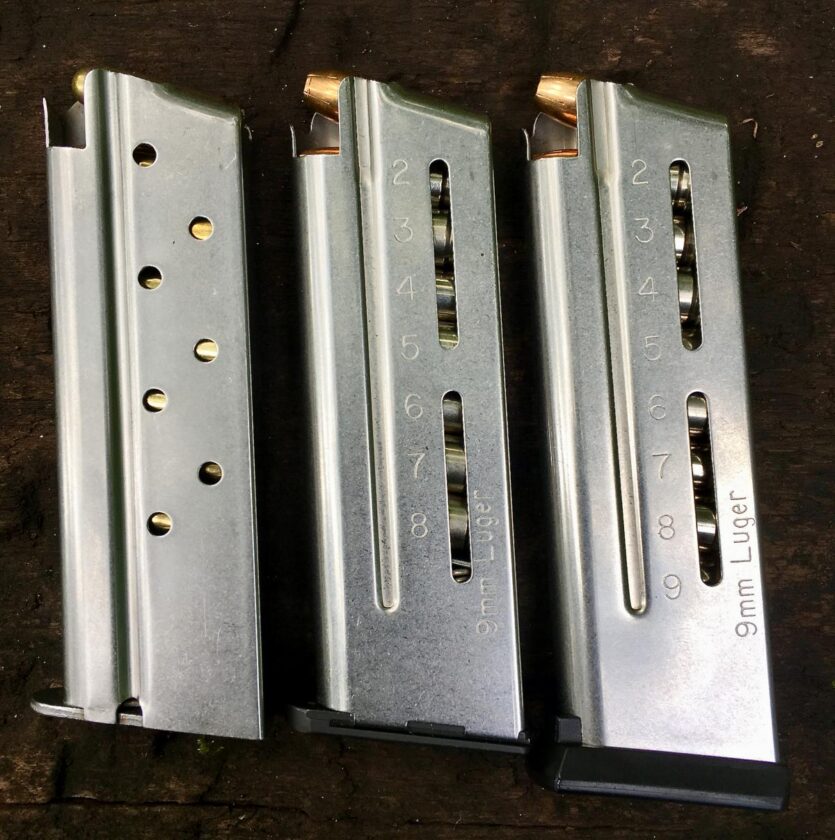
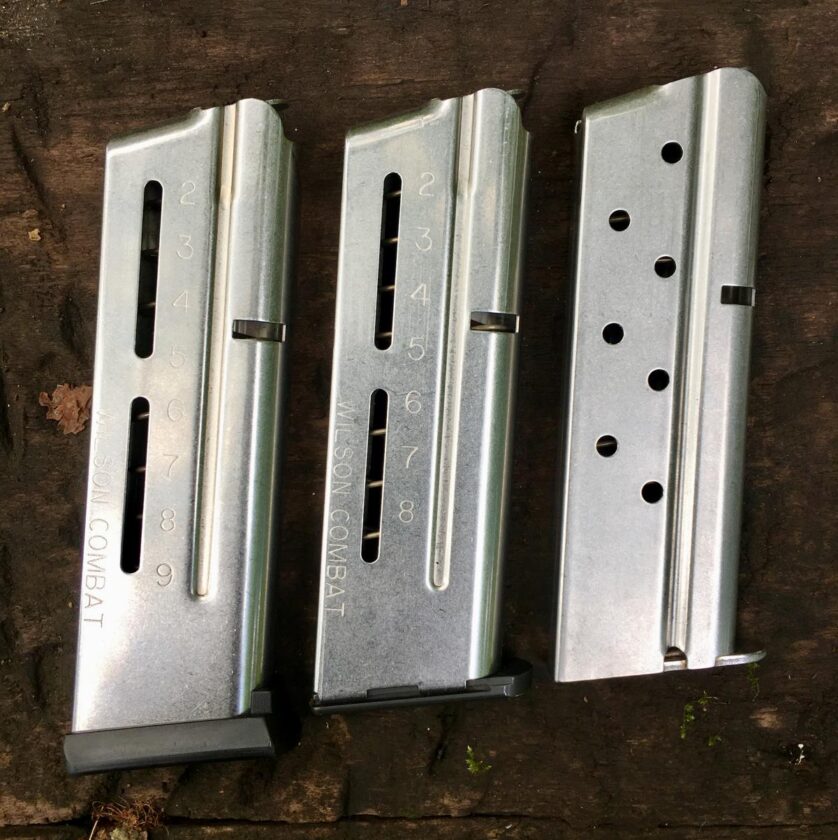
I had begun to seriously lose confidence in this gun. For a guy like me this was a once-in-a-lifetime purchase, and that really sucked. Fortunately the fix was just running a decent magazine. I will purchase some more Wilsons – that haven’t been dropped into the dirt, onto the concrete, and stepped on dozens of times – and reserve them for carry. I will relegate all six of these (and all the Metalforms) to range/practice mags.
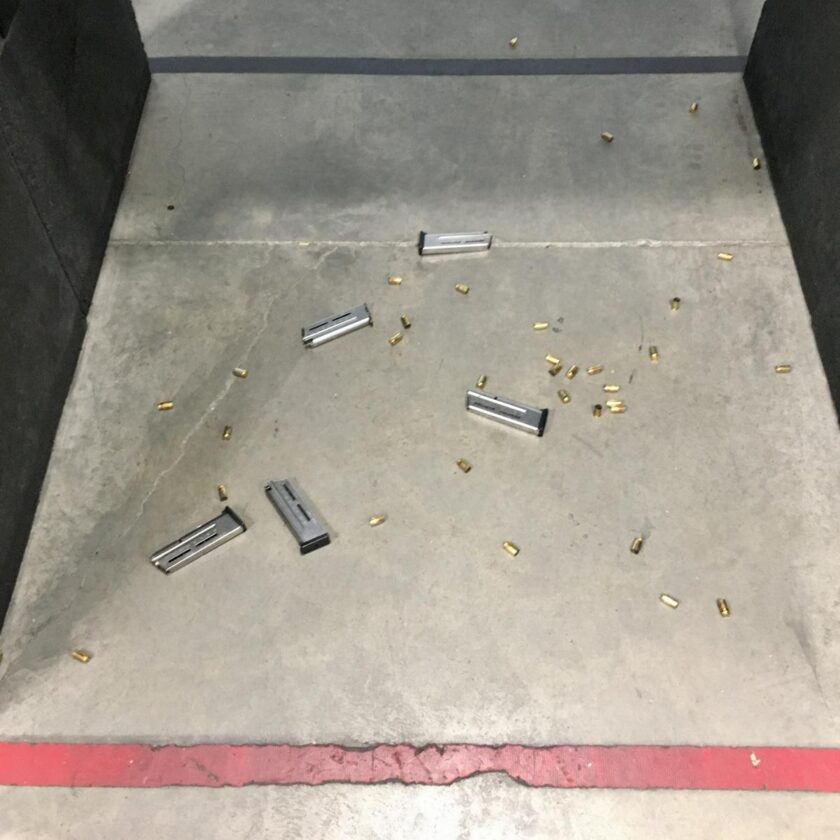
If you’re considering the purchase of any 1911, learn from my mistake. Don’t spend a ton of money on magazines until you’ve tested a few and found a brand/model that works well in your gun (hint: it will probably say “Wilson Combat” on it). They will be a bit more expensive up-front, but will probably be well worth it in the long run.
Accuracy
Quantifying the accuracy of such a firearm is something I am probably ill-equipped to do. I don’t have a lot of stomach for bench-rested groups. I don’t care to read about them and I’m certainly not going to write about them. I’m much more interested in what humans can do with a firearm. Two of my goals with this firearm were to be able to reliably make a head shot at 25 yards (index card or 4″ circle, IDPA target-style), and to be able to reliably make an effective body shot at 50 yards.
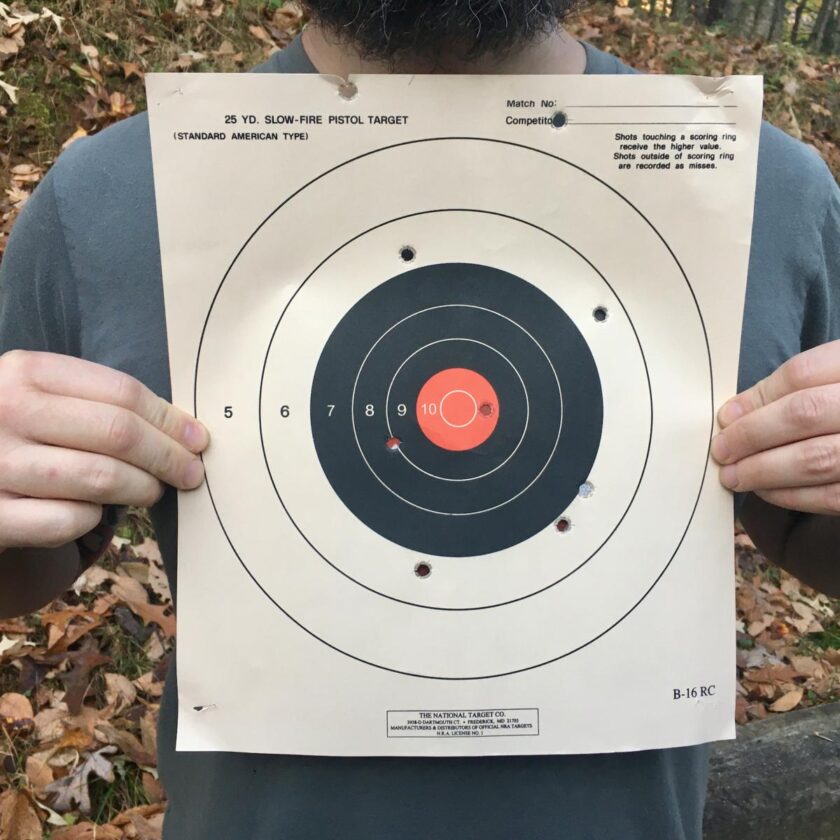
I have mostly achieved both. The target pictured above was fired at fifty yards. it was 8+1 rounds of my carry load. All were shot on a draw, with a time limit of 4 seconds. A couple of them got a little high, but overall I’m pretty pleased with this. Also note: this target isn’t atypical, good or bad. This is about average and just represents the last time I went to the range, rather than a hand-selected target.
Maintenance
Generally, 1911s require a higher level of maintenance than plastic guns. This is fine with me as I consider the 1911 an enthusiast’s gun, and myself an enthusiast. I am also not one who is particularly enamored with the idea of carrying a dirty gun. Studiously maintaining my 1911 became part of my ritual and part of my overall experience with the firearm. It was a chance to get to further know the gun, and keep an eye on any potential issues (I didn’t identify any).
I performed a field-strip and cleaning after every range session for the first 3,763 rounds. This usually involved just brushing down contact surfaces and carbon deposits, running some Hoppe’s #9 and a bore snake through the pipe, and lubricating the gun (my lubricant of choice since April has been Hornady’s One-Shot aerosol lube, and I have been completely satisfied with it). I tried to maintain a schedule of cleaning out the firing pin and extractor channels every 1,000 rounds or so. At the 2,700-round mark I decided to change the recoil spring.
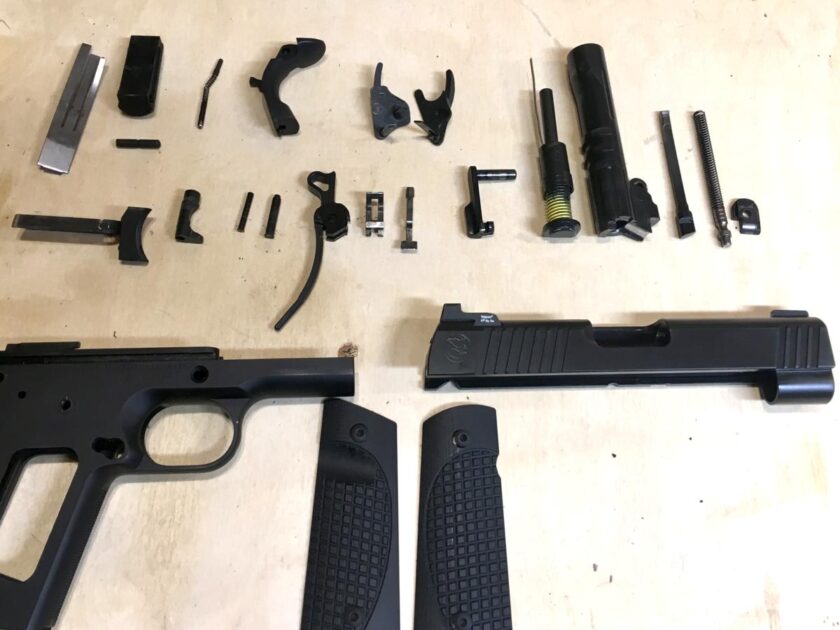
Nighthawk advised me that their flat-coil spring only needed to be changed every 7,500 rounds or so. At the time I was attempting to fix the failures to return to battery and wanted rule out variables, concurrent to switching to the Wilson Combat magazines. At the same time I did a detail-strip of the gun and gave it a thorough cleaning, as well. Every 2,500 rounds or so seems like a good interval to do a detailed cleaning on a 1911 with such tight tolerances and I will likely continue this schedule.
I want to be perfectly clear: this was not a torture test by any means. However this gun has certainly not been babied. Since owning it, I have drawn the gun from Kydex (and leather) tens of thousands of times. I’ve carried it extensively, and as my range log would indicate, I’ve fired over 5,000 rounds through it. I have also dry practiced with it for over 40 hours this year.
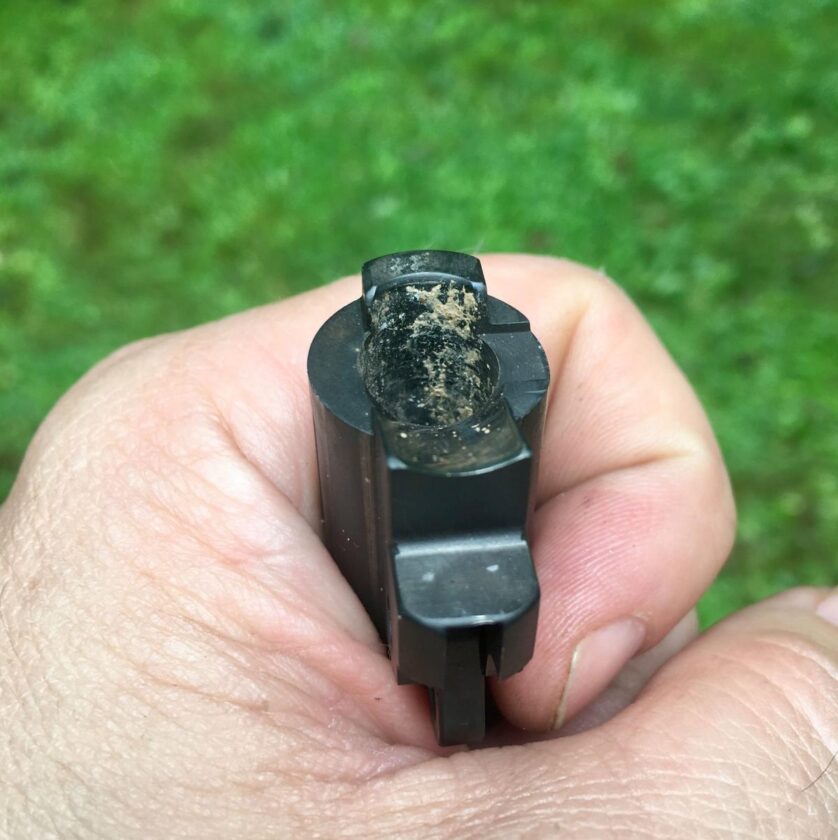
Reliability
Now that I’ve discussed ammunition, magazines and my maintenance regimen, we can discuss reliability. First, ammunition seemed to have basically no effect whatsoever on reliability. With bullets from 90- to 147-grains the gun functioned perfectly. Granted I didn’t put huge numbers of light- or heavy-for-caliber bullets on the gun, but it worked with everything I shot.
Magazines did impact reliability significantly. I’m not going to beat up on the MetalForm magazines anymore, but I will brag on the Wilson’s magazines. These magazines were used hard. They were used for my daily dry practice since mid-May. They’ve been dropped, wet, and dirty. They’ve been used exclusively for all my range sessions for the last 2,500+ rounds. They, and the gun, have performed flawlessly. With the Wilson magazines the NHC has gone 2,553 rounds (so far) without a malfunction. That’s not an impressive number to a Glock audience, but it’s plenty adequate for a self-defense handgun. And it’s more than I can say for some of my revolvers.
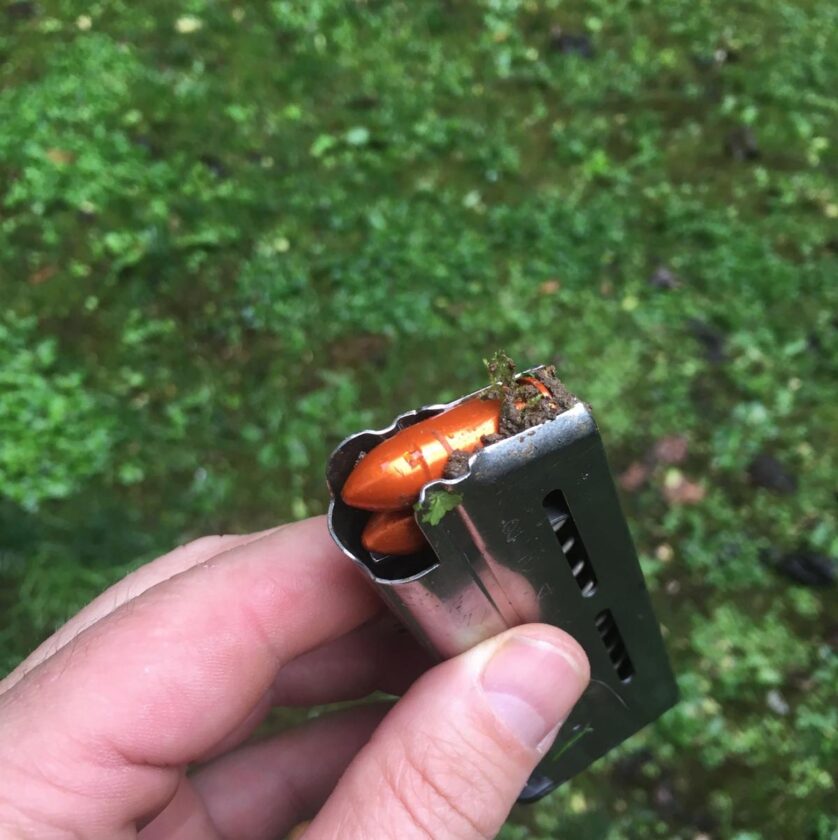
Maintenance probably has some impact on reliability, but I didn’t get far enough along with a dirty gun to really find out. You will notice in my range log that I annotated a few sessions as “no clean,” meaning I didn’t clean after these sessions. I did a couple of these and got as high as 574 rounds with no cleaning and no malfunctions.
Wear and Tear
When I first got the Nighthawk, I was keenly interested to see what it would look like after a year of use. Externally the gun doesn’t quite look like new, but could probably pass for a gun with a three-digit round count.
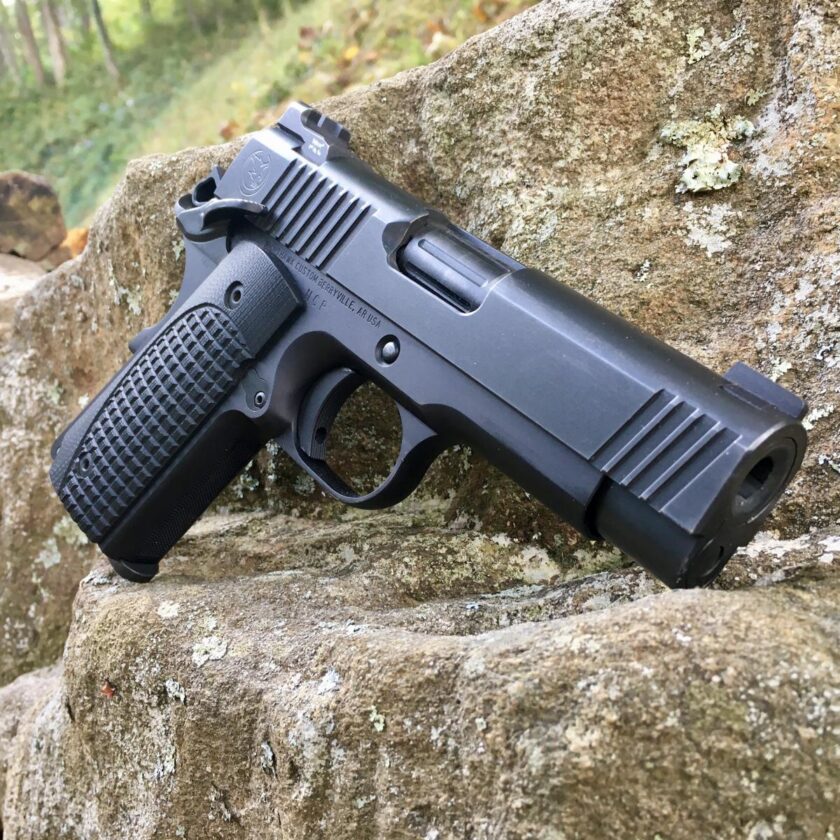
The black nitride finish on the slide and other steel parts is some tough stuff. There are a few spots that have worn through. The first is the leading edge of the slide, where it rubs against the Kydex holster each time I holster.
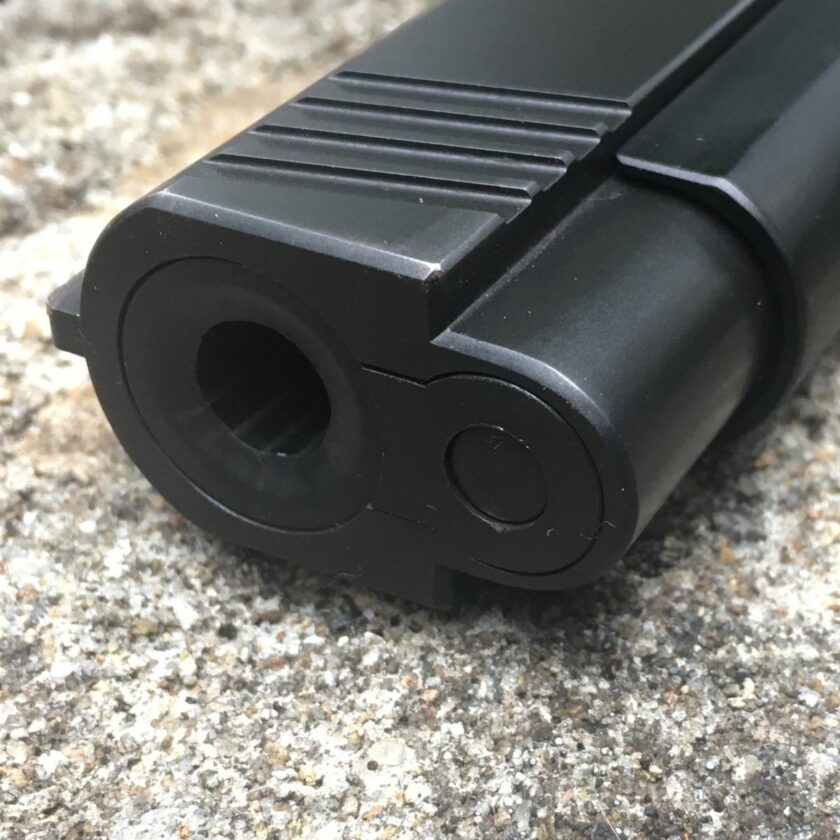
The slide release has a minor wear-through at its apex, and the left side thumb safety has a significant wear-through. This isn’t too surprising as the gun is frequently lain on my nightstand on its left side.
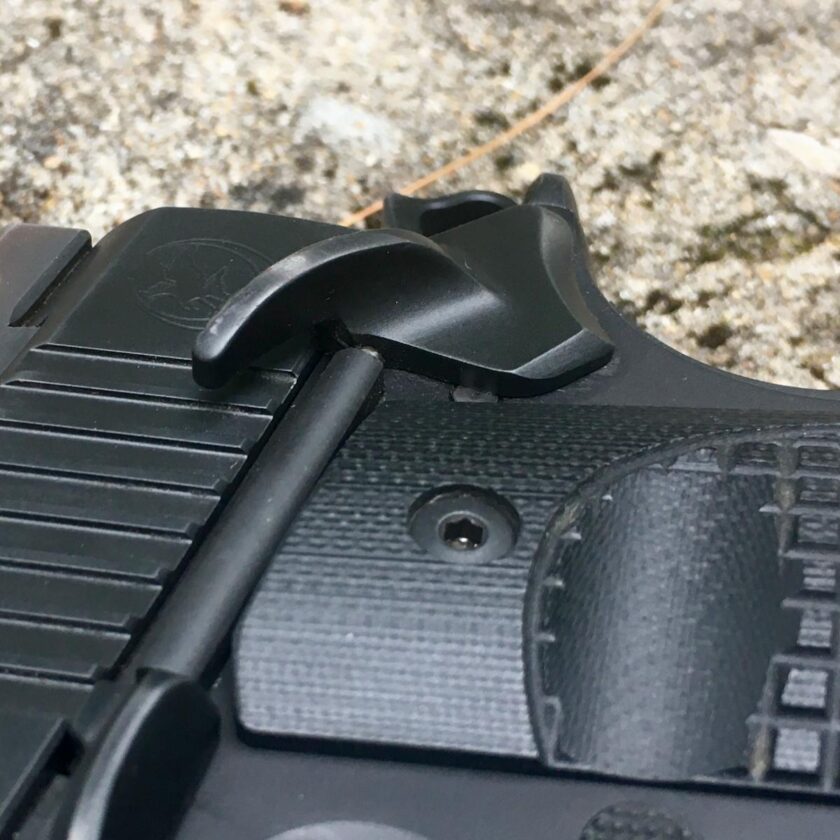
This is especially impressive when you consider that this gun has been carried daily for almost a year. Almost every single day the mercury rises above 60, the left rear side of the gun is covered in condensed sweat. Frequent exposure to corrosive sweat further justifies periodic detail cleaning.
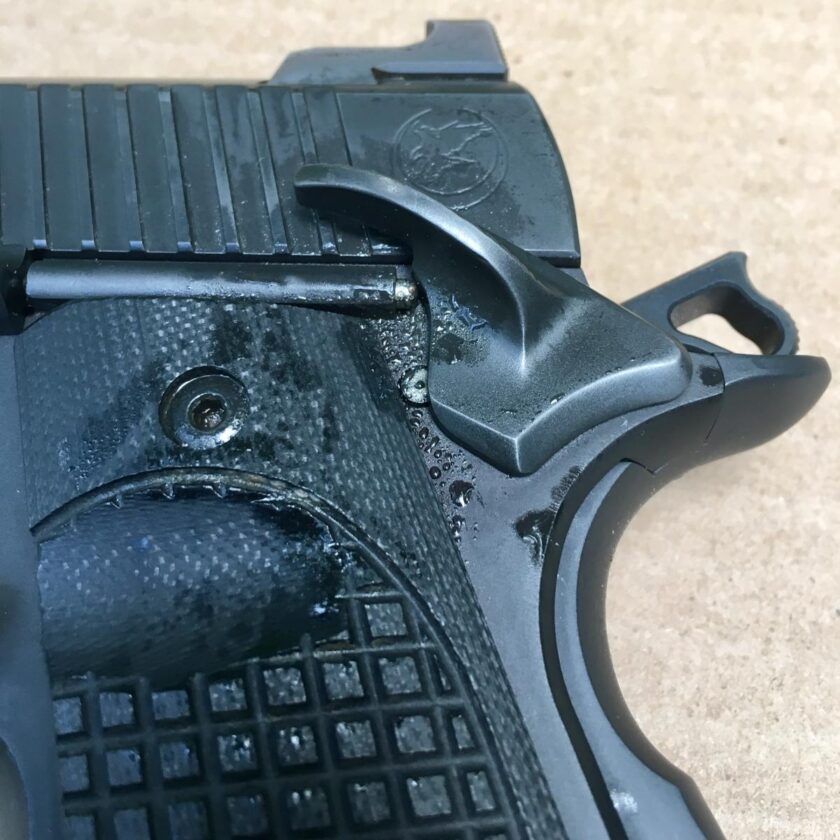
The anodized aluminum frame could basically pass as new. The only exception is the magazine well which has been thoroughly battered by magazines. The 30-lpi checkering on the front of the frame and the mainspring housing are still as sharp as ever. . . almost. The morning before I published this I noticed a huge gouge in the front strap checking. I’m not sure what happened, but the old girl has another beauty mark.
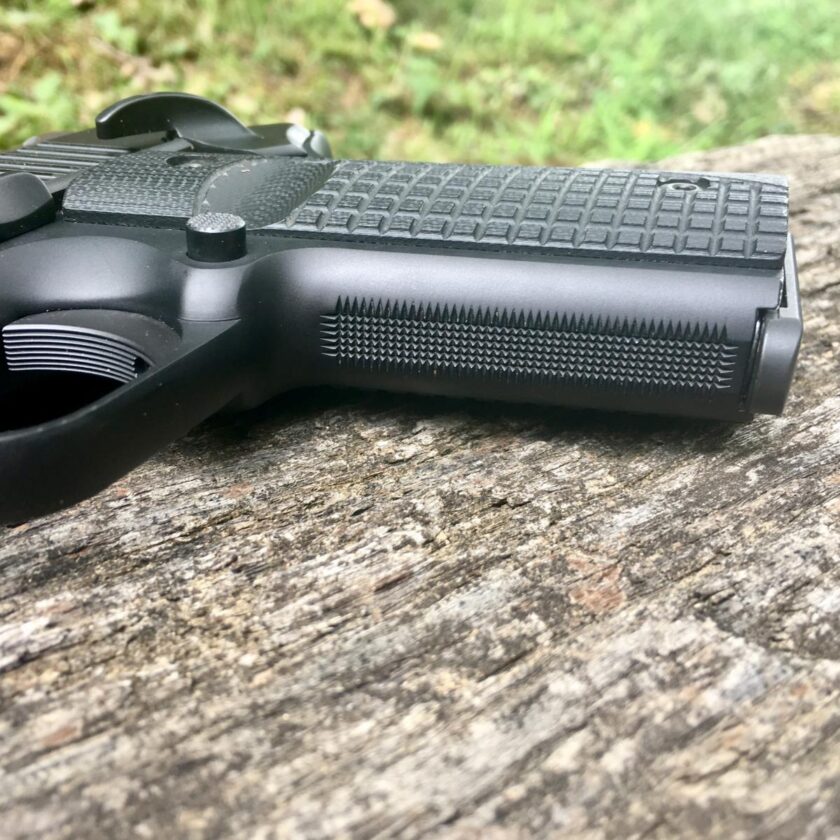
Internally the Nighthawk shows a bit more wear, and this is to be expected. The barrel shows the most wear along the hood and locking lugs.
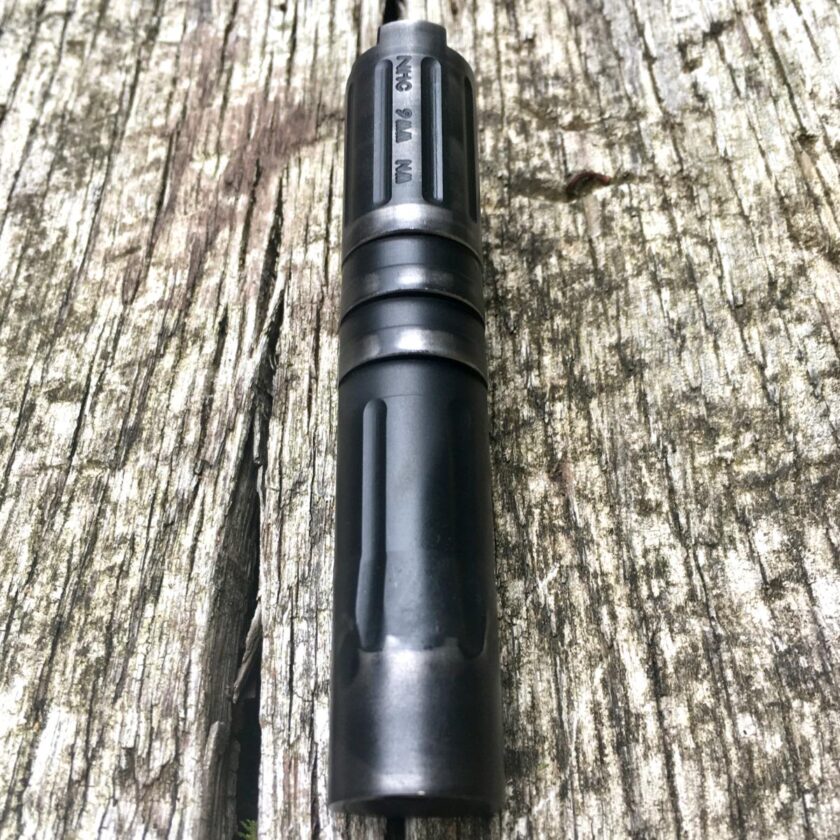
The Heinie rear sight has borne the brunt of wear-and-tear on this gun. This is not totally unexpected; it isn’t finished with the same finish on the rest of the gun, and it sticks out to get knocked around on things.
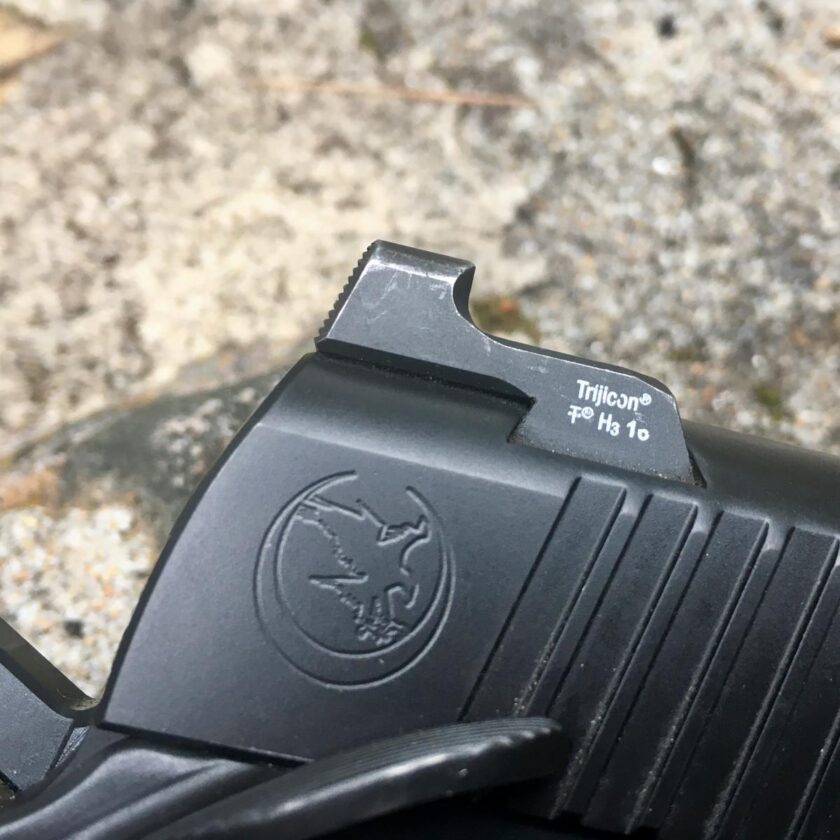
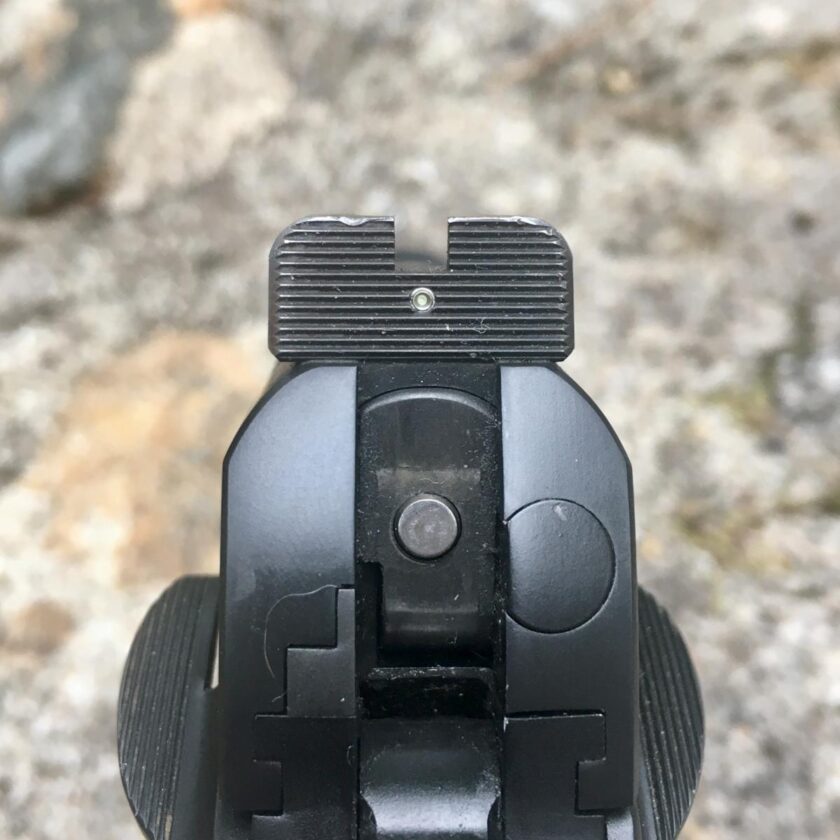
Carrying the Nighthawk Custom Carry
Carry is where this gun has never been an issue. Actually, I take that back – it was an issue with the first holster I purchased which turned out to be horrible. Since then, carrying this gun has been close to perfect for me. The Nighthawk Custom Carry is no ultra-lightweight. With a full magazine of 124-grain HSTs she comes in at just under 32 1/2 ounces, but it’s still a comfortable all-day gun. I have carried the Nighthawk Custom Carry in three holsters.
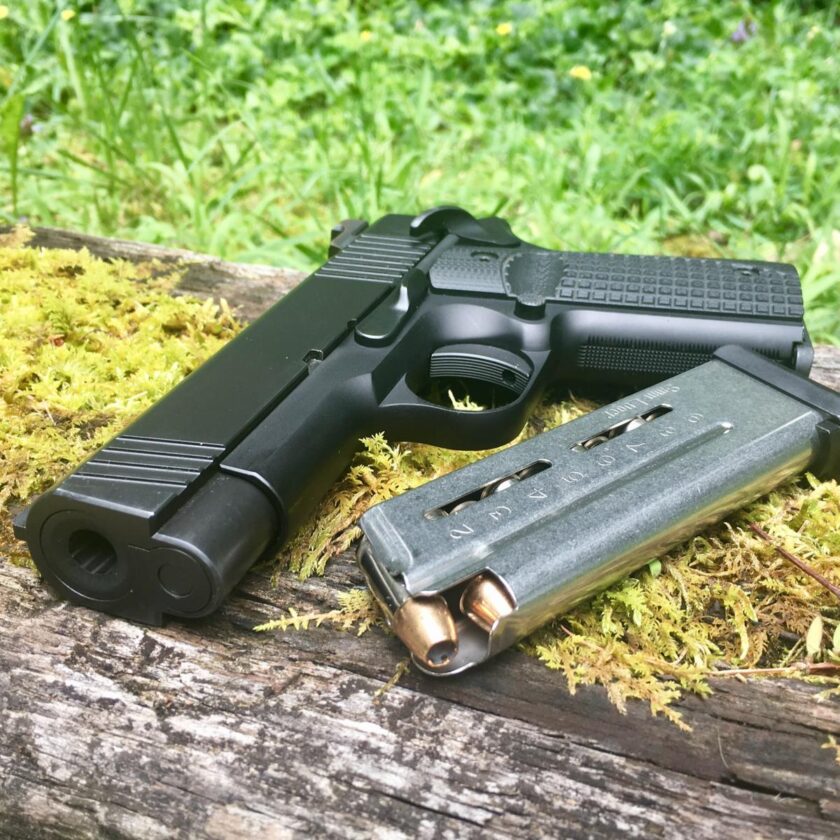
The first is my “out of the house” holster, or the one I wear anytime I’m leaving home. It is a Precision Holsters’ Ultra Appendix. The Ultra Appendix does an excellent job of keeping the gun concealed, even with nothing more than a t-shirt. It’s also comfortable, though it can get a little pinchy by the end of a long day. I did the same comfort modification I did on my Dark Star Gear holster a couple of years ago and it is amazingly comfortable now.
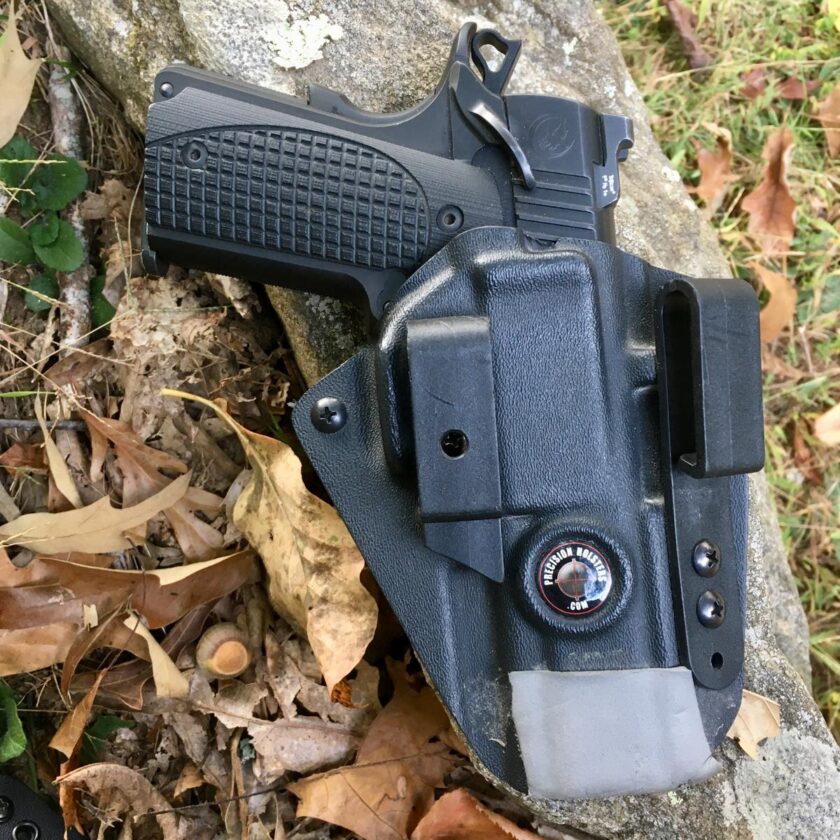
The other holster I wear the Nighthawk in is my “around the house” holster, which also serves as my “long drive” and “hiking” holster. Rigorous activity like hiking or the farm chores I’m often up to at home aren’t an ideal fit with appendix carry. Additionally, around the house I conceal, but don’t have to worry about being absolutely concealed, so I like a strongside OWB. Since reviewing the Kramer Belt Scabbard for the King Cobra I had to have a Kramer for my 1911. Kramer was willing to customize one with a full sweat guard which has helped tremendously in keeping the gun sweat-free.
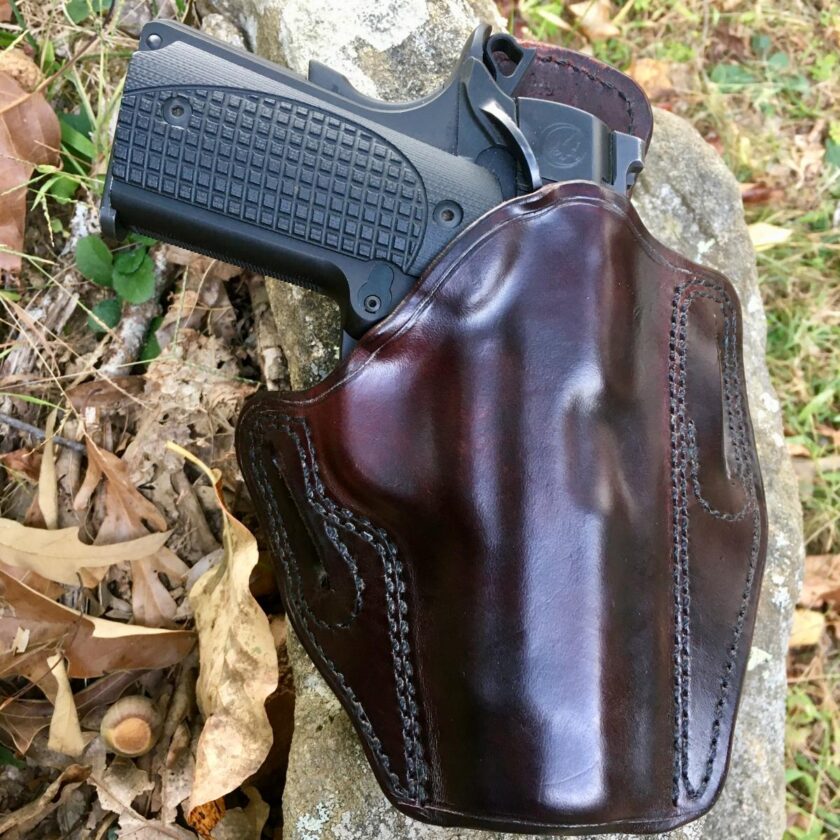
The third holster is an Ares Tactical holster that fits on my “battle belt.” I have had very little time to work with this holster.
Finally, I carry a spare magazine just about all the time. I know that reloads are vanishingly rare in self defense situations, but I dry practice enough that keeping a mag pouch on my belt makes sense. And if the mag pouch is there, I might as well have a mag in it. When ordering mags for Wilson Combat I went ahead and ordered a mag pouch from them. It’s worked out really well; it sits nice and flat against my and is hardly noticeable.
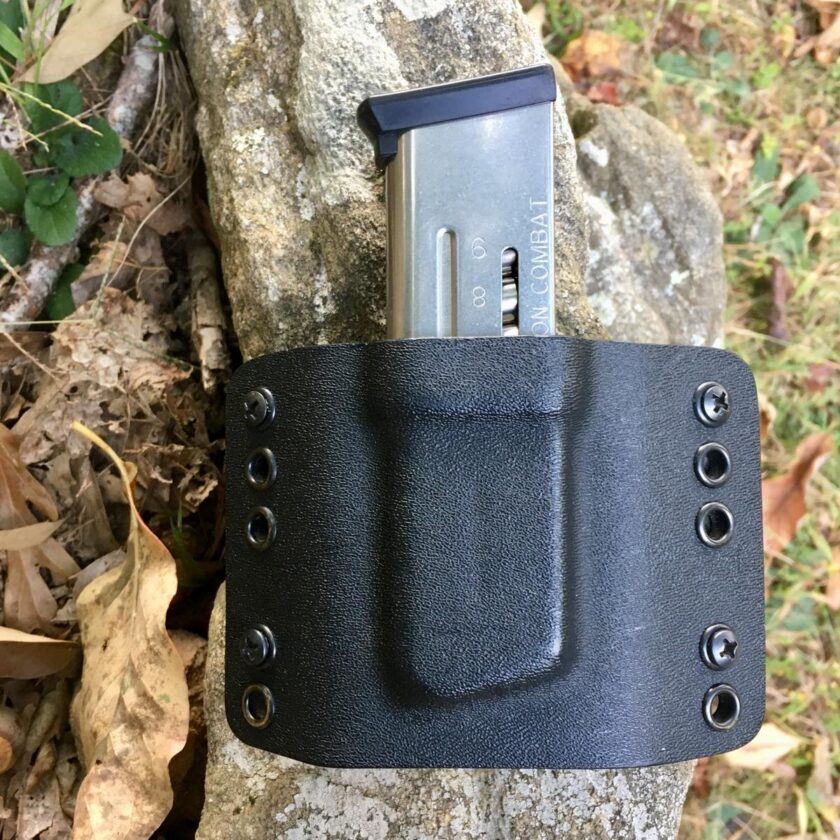
All of this is carried on a Precision Holsters belt.
The Bottom Line
I occasionally get asked if purchasing a custom gun “is worth it” or if I have any regrets about this purchase. My biggest regret is not ordering another tuned extractor. I dread the thought of having to send this gun off to have an extractor mated to it. Maybe I need to buy a tool and learn to do that myself, but either way I’d feel better if I had a backup that I could drop in as needed.
Other than that I am incredibly happy with this gun and hope it lasts for generations to come. This is the only gun I’ve ever owned that was built exactly the way I wanted it. It runs reliably, shoots accurately, and carries well. It is a marvel of craftsmanship. The details of its construction and its fit and finish continue to amaze me. It has turned into my constant companion. After 5,000 rounds and an estimated 50,000 dry presentations it feels like an extension of my arm. This is exactly what I had hoped to get out of this handgun.
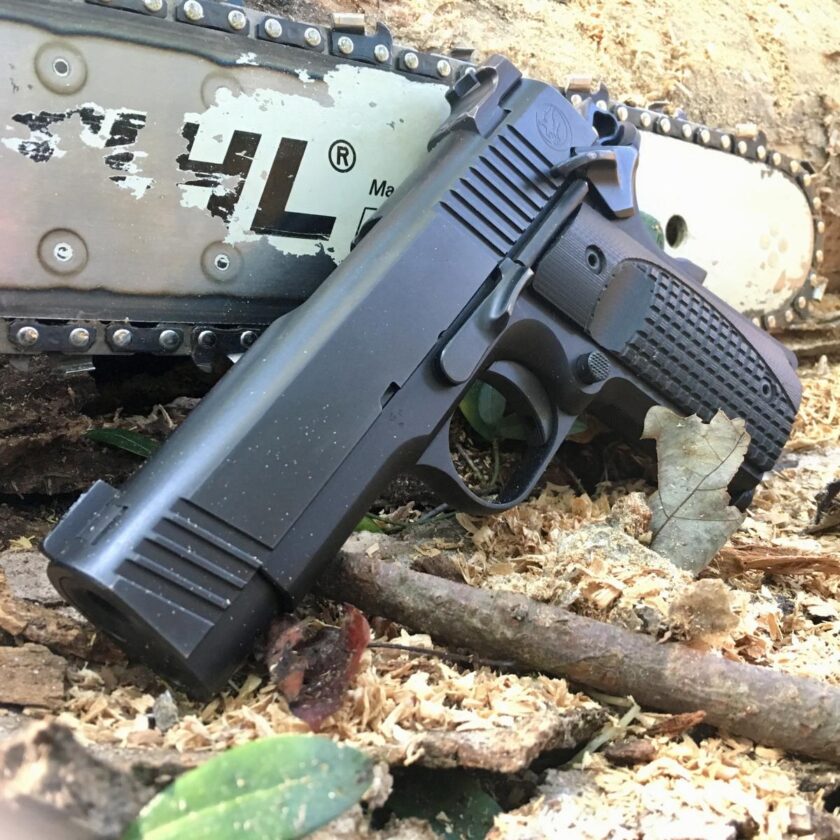
Nighthawk Custom makes superb handguns – there is no doubt about that. Despite my enthusiasm for this particular gun, I couldn’t unreservedly recommend a purchase from Nighthawk. The shipment of a couple Metalform mags with the gun isn’t the worst thing. Being specifically told not to buy Wilson mags doesn’t instill total confidence, however.
But if you’re in the market, don’t let that totally dissuade you, either. Learn from my mistakes. Ask good questions. Be a little more judicious than I was. If you end up with a Nighthawk handgun that’s as good as mine is, I have a hard time seeing how you won’t be satisfied.
†I feel as though listing a mean or median average here is a bit unfair. Since most malfunctions occurred roughly two-at-a-time, a better representation of their distribution would probably be range. The range between malfunctions is closer to 500 rounds. Put another way, I would generally go about 500 rounds without a malfunction, then have a couple.





